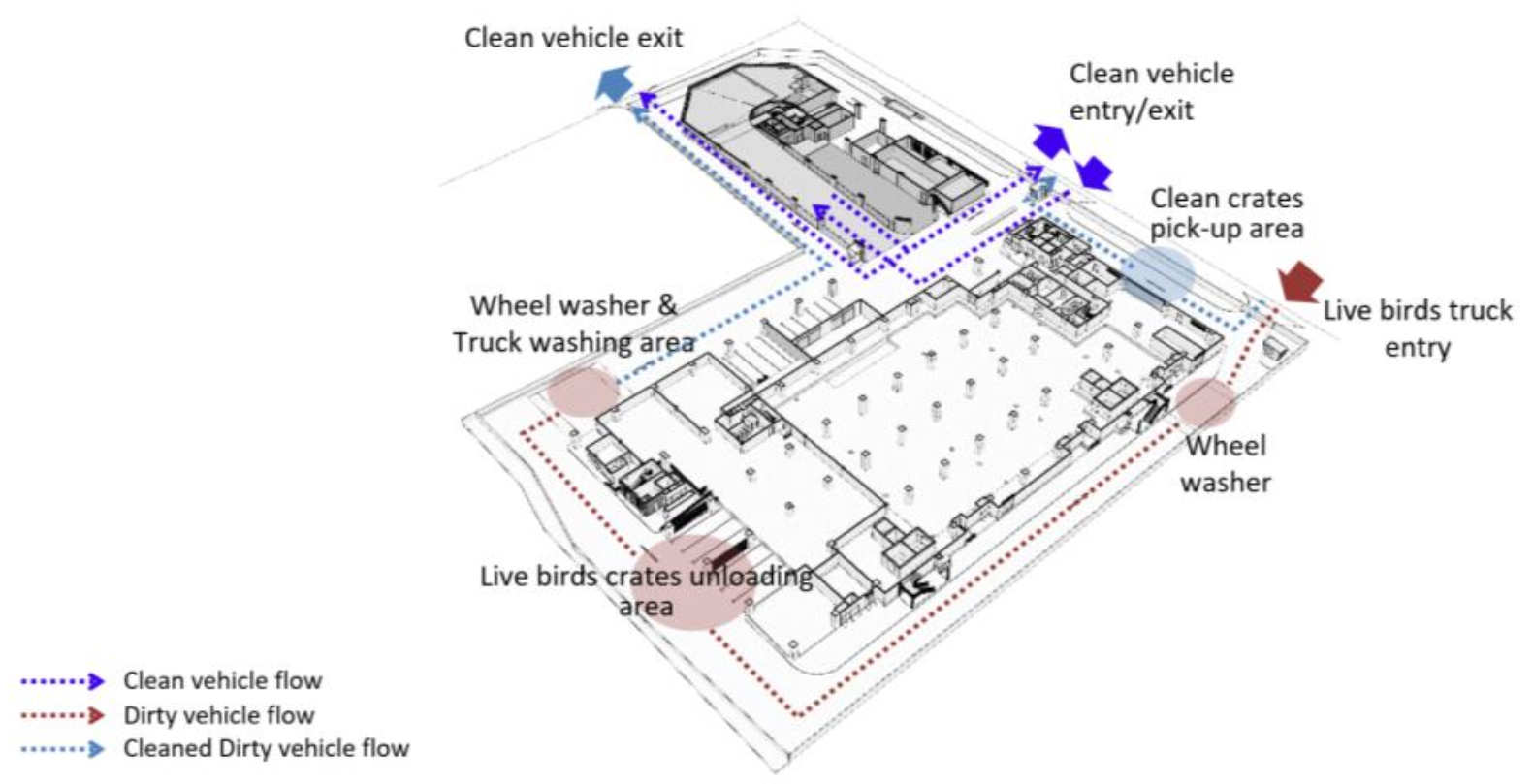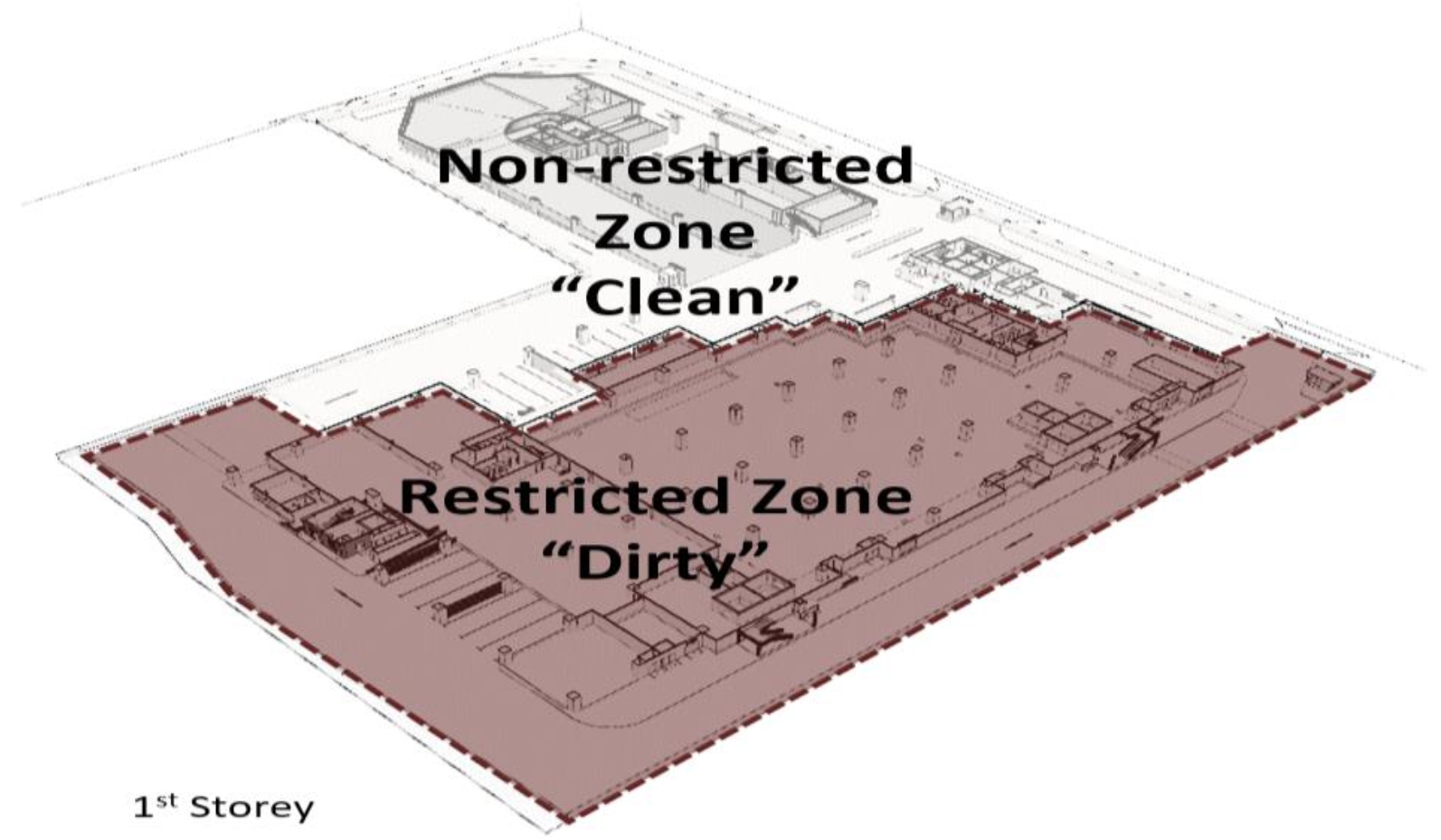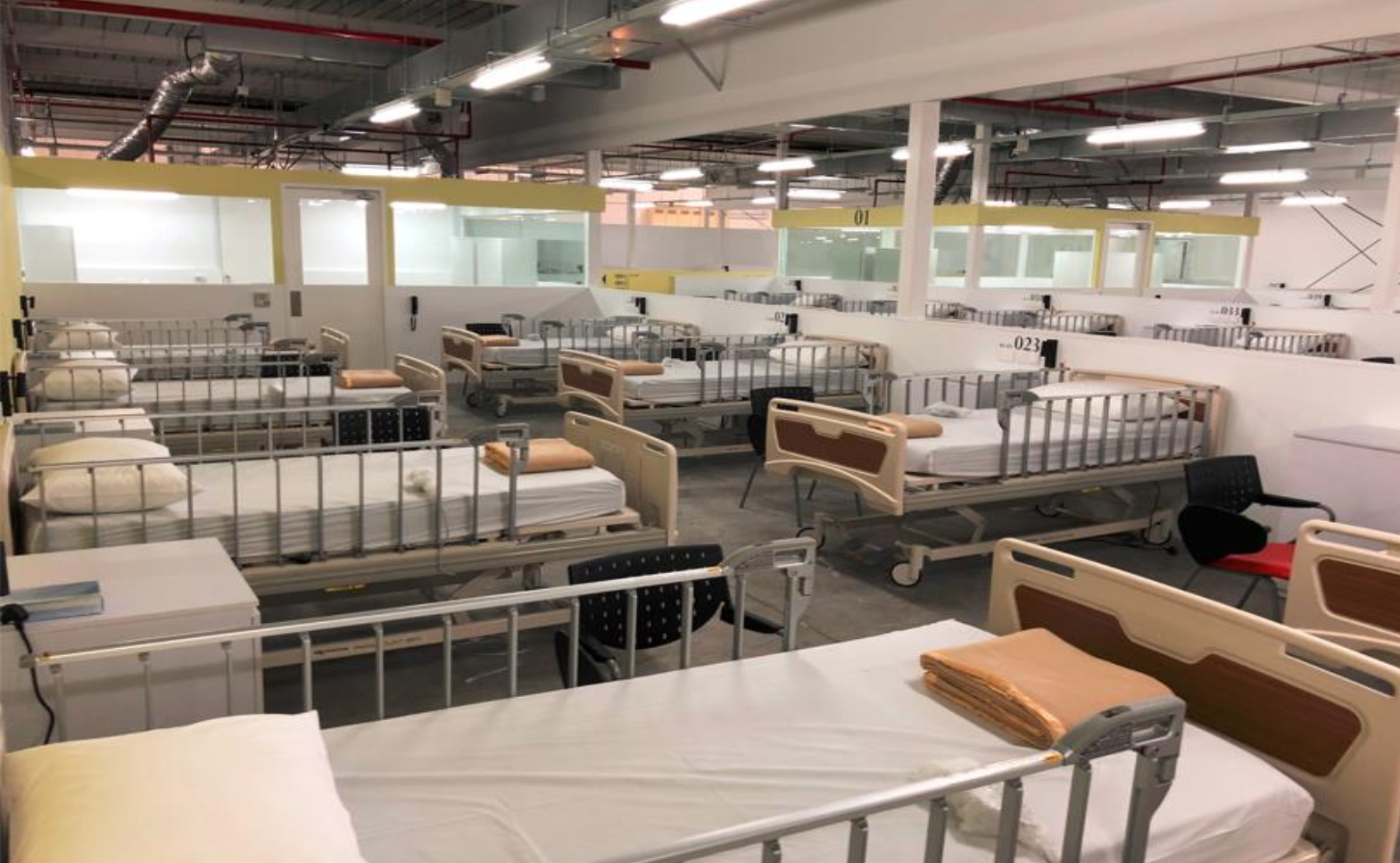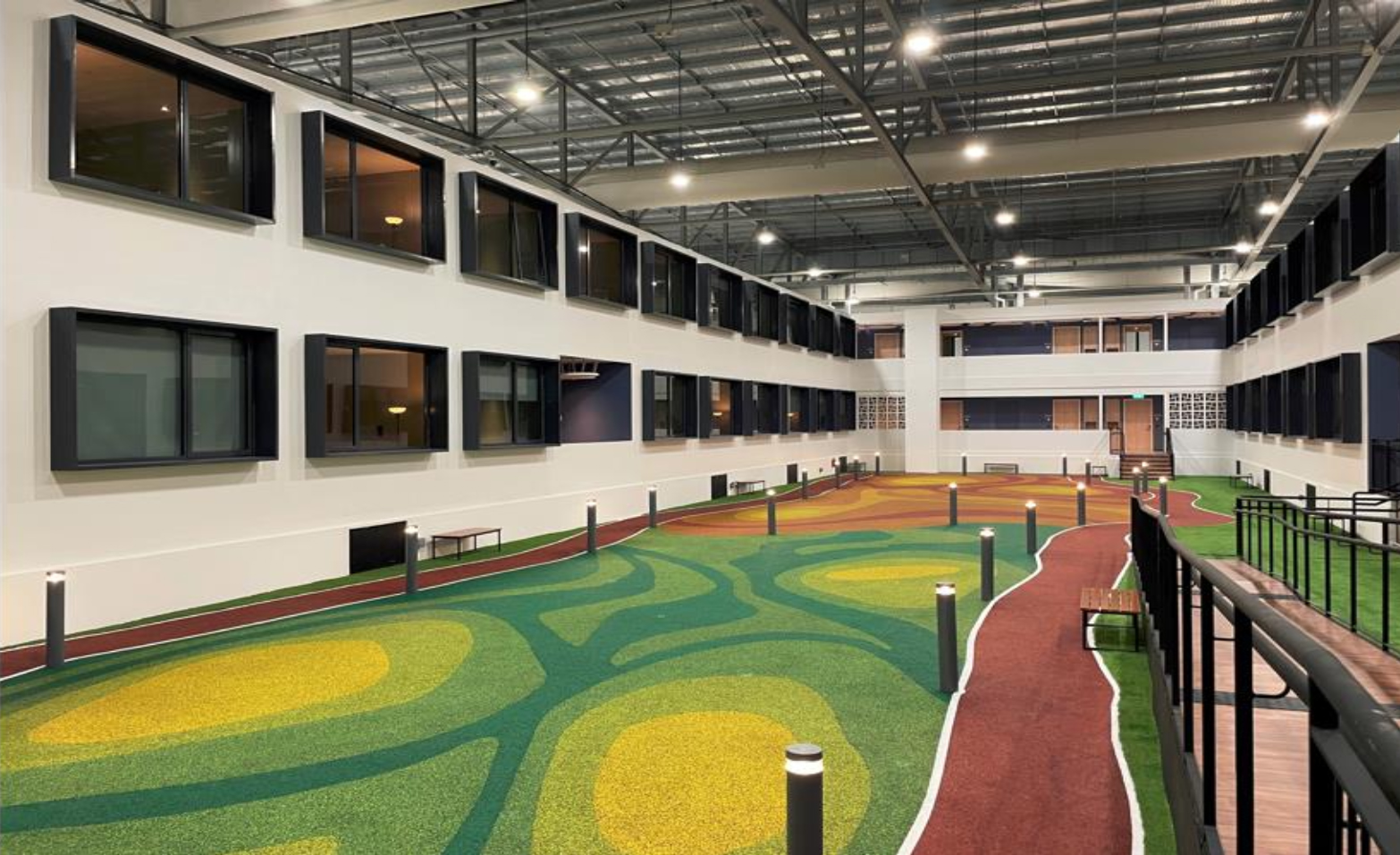Designing for a Post-Pandemic Endemic World
 Ivy Koh
Ivy Koh
Director, SJ Architecture, Surbana Jurong
The planning, designing and engineering of urban spaces has increasingly pivoted to safety and health. As Singapore eases restrictions and the economy continues to open up, space planners are increasingly challenged to think about new ways to design urban spaces to facilitate interactions within safe management protocols.
Re-designing Virus Hot Spots
Health care facilities, community spaces including food courts and hawker centres have come under the spotlight as a sizeable portion of Covid-19 clusters were recorded at these facilities.
Designers are already starting to think about retrofitting existing spaces to accommodate a prolonged period of safe entry checks, re-configuring seating plans to take into account distancing protocols and the interaction between space users and those who operate the space. The typical model of designing to maximise the use of space will now have to give way to well-ventilated and open green spaces that are equally safe-distanced as the Delta, and now the Omicron variant, has shown that the virus does not discriminate between closed and open spaces.
The outbreak at Jurong Fishery Port (in Singapore) provides even further opportunity to re-think the typology of food handling and processing facilities. In the 2019 iteration of the JTC Poultry Processing Hub @ Buroh (refer to illustrations 1 & 2), Surbana Jurong (SJ) architects incorporated in its design a clear segregation of different stages of processing poultry, making sure the slaughtering of live birds, as well as the collection of waste products, harvesting giblets, chilling and grading of dressed chickens are conducted on the ground floor. On separate levels, a cold chain system provides for a safe and hygienic transfer of the poultry to the respective processors and storage facilities.
 Illustration 1: Live birds delivery and vehicular flow at JTC Poultry Processing Hub @ Buroh (Picture credit: Surbana Jurong Architecture)
Illustration 1: Live birds delivery and vehicular flow at JTC Poultry Processing Hub @ Buroh (Picture credit: Surbana Jurong Architecture)
 Illustration 2: Zones are clearly segregated within the JTC Poultry Processing Hub @ Buroh, in the event of a pandemic outbreak (Picture credit: Surbana Jurong Architecture)
Illustration 2: Zones are clearly segregated within the JTC Poultry Processing Hub @ Buroh, in the event of a pandemic outbreak (Picture credit: Surbana Jurong Architecture)
In the event of any avian pandemic, the ground floor can be isolated, while the rest of the hub continues to operate with an alternative supply of chickens. The transportation system and stages of processing can also be closed to ringfence disease spread. Poultry operators at the hub can continue to supply chicken to consumers. The same design considerations can be made for handling a pandemic such as Covid-19.
Playgrounds in many heartland housing estates remain bordered up, but as Singapore transitions to managing Covid-19 as an endemic, more thought will also have to go into designing outdoor spaces that are safe to use, striking the balance between encouraging interaction within safe distancing limits. Taking a leaf from other outdoor spaces, interlocking pocket gardens with mass public spaces increases access to green areas. These green pockets can be placed with steps to maximise flow and function as informal seating during non-pandemic periods, and the steps can be replaced with plants that provide a natural barrier to keep intermingling to a minimum.
Within the home, designers have to also consider that it is increasingly common for people to serve quarantine in the home and their numbers may increase. There is an opportunity for designers to come up with short term interim solutions to enhance sanitation to be included in an endemic-ready apartment. For instance, the pre-entry area of an apartment or the lift lobbies may require a reconfiguration to incorporate a washing zone to ensure contaminants are eradicated before contact with one’s personal spaces. Such design intervention serves to instil critical hygiene practices and habits from now on.
A More Collaborative Approach to Design
One of the biggest gaps in the built environment that COVID-19 has surfaced is the siloed thinking around design and usage of spaces. In the “next normal”, we will need to build more urban spaces with the potential to serve multiple functions even as we think about converting quickly to care facilities during a pandemic.
Urban spaces must be designed in a manner that allows facility operators to control foot traffic when a cluster emerges, and modular where possible so that the space can be immediately re-purposed in an emergency. Development sites have turned into temporary vaccination centres, exhibition and convention spaces have been successfully converted to community care facilities and later evolved to a meeting facility for travellers (refer to Illustrations 3 & 4). Traditional industrial facilities have begun to incorporate retail shopfronts. Spaces below expressway viaducts are increasingly being used for sporting facilities. Architects are challenged to think about how this kind of flexibility can be applied to other spaces including transport nodes, MRT stations and carparks.
 Illustration 3: The Singapore Expo Hall 9 functions as a community treatment facility with hospital beds for elderly patients requiring close observation (Photo credit: Surbana Jurong Consultants Pte Ltd)
Illustration 3: The Singapore Expo Hall 9 functions as a community treatment facility with hospital beds for elderly patients requiring close observation (Photo credit: Surbana Jurong Consultants Pte Ltd)
 Illustration 4: Courtyard spaces within the Singapore Expo Hall 9 provide young patients and their caregivers with an area for rest and recreation (Photo credit: Surbana Jurong Consultants Pte Ltd)
Illustration 4: Courtyard spaces within the Singapore Expo Hall 9 provide young patients and their caregivers with an area for rest and recreation (Photo credit: Surbana Jurong Consultants Pte Ltd)
More than ever, urban planners have to engage other stakeholders outside of the traditional project life cycle in the design process.
Also increasingly, climate engineers are being valued for their ideas on ways to keep indoor air temperatures healthy. Now, architects and climate engineers must work closer on innovative solutions such as the segregation of filtered clean air and contaminated air, not just in hospitals and health care facilities but in the homes too. At Connect @ Changi, designers modified air circulation protocols to ensure that contaminated air in the room cannot pass to other spaces within the meeting facility. The same can be applied to other spaces that can be possibly re-purposed to manage cluster outbreaks.
It will not be long before healthcare specialist designers will have to propose design solutions for non-healthcare facilities. Shipping containers have been re-configured to fit ICU units, so the possibilities are endless. Logistics specialists will have to be consulted on warehousing and cold store typologies to design safer facilities for the processing, handling, transport and delivery of drugs and food. Security specialists will have to work with designers to leverage visualisation technology tools to help facility operators collect data about the health status of individuals entering all types of building development in a non-intrusive manner.
Covid-19 has indeed given architects and designers an opportunity to re-think building typologies and make a significant impact for the future of the built environment.
Connect with Us
Ivy Koh
Email: [email protected]


